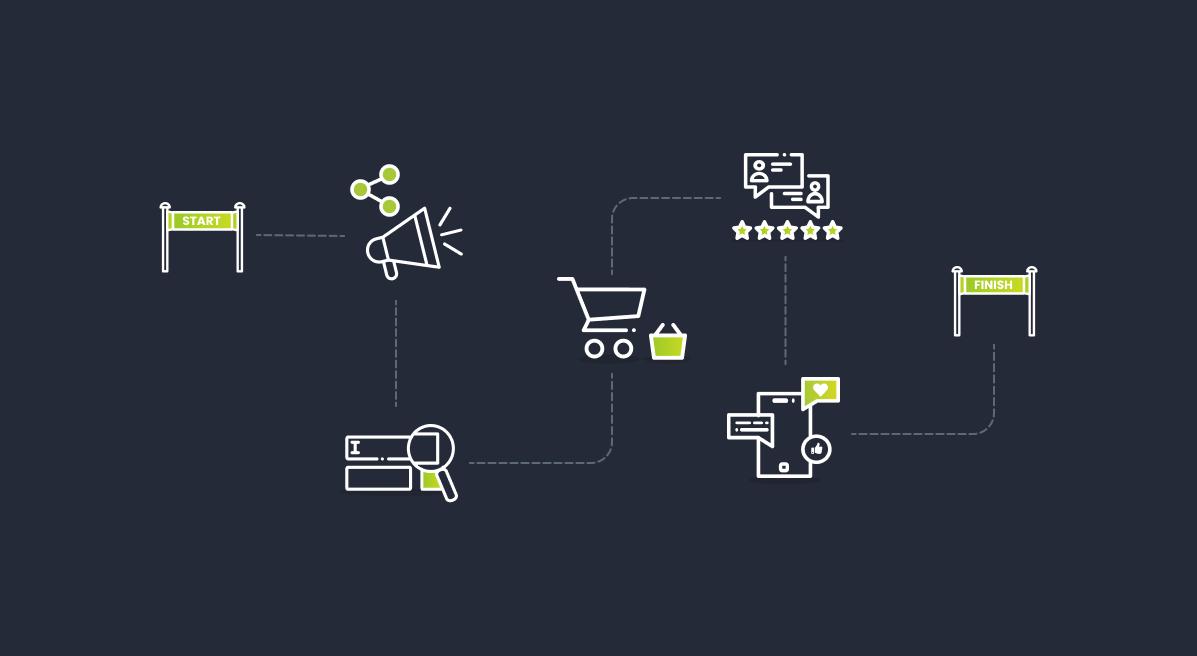Mapping your customers’ journey is crucial to ecommerce success!
Think back to the last time you purchased something online and you’ll likely recall a few stages of the journey:
Firstly, you came to the realisation that you wanted a particular product or had a problem that needed to be solved. Next, you may have researched various products or solutions and tried a few sites to find the best value or quality. Then, you probably mulled your options over for a few hours or days, and came to a decision. Right?
This process is referred to as the customer journey, and is an extremely important element in ecommerce.
During each stage, your customer will be interested in different elements and understanding their wants, needs and pain points throughout the journey, can prove vital for success. Think of it this way, each touchpoint along the way is a chance for you to demonstrate why your business is the right fit for them. So grab the opportunity with both hands and get mapping!
Customer Personas
Before you can map your customers’ journey, you need to get into the mind of your ideal customer. A great way to do this is by creating customer personas that represent the age, gender, hobbies, location, motivations and behaviours of your real customers.
You can utilise Google and Facebook Analytics to get an insight into your customers’ wider interests, likes/dislikes and social motivations. When you have this information, you can combine it altogether on paper and there you have your customer persona! Next time you’re writing an Instagram advert or newsletter subject line, you can add a personal touch, based on this research.
Now you’ve got to grips with your customer persona, it’s time to map their ecommerce journey and identify the ways you can improve the customer experience!
1. Understanding The Phases
The customer journey generally contains 5 key phases:
- Awareness: The awareness phase does exactly what it says on the tin! In this phase, customers are only just becoming aware of your product or service. There are a number of ways this happens, from seeing a post on social media, an advert on Google, word of mouth or even through traditional mediums such as billboard adverts or flyers in the post.
- Consideration: During the consideration phase, customers are likely to be researching particularly products, watching product tutorials and reading your product descriptions. Also during this phase, they will be looking at your competitors, so this is a crucial time to get it right!
- Conversion: It’s time to celebrate – You’ve successfully led your customer from the awareness phase, all the way through to committing to a purchase. However, during this phase you must do everything you can to avoid customers abandoning their carts!
- Retention: During the retention phase, it’s important to nurture your customers. Make them feel loved and appreciated by offering them exclusive discounts and make them feel part of your community.
- Advocacy: Advocates are the crème de la crème of customers and should be treated that way! Customers within this phase strongly align with your brand values and want to shout about your business from the rooftops.
2. Identifying Touch Points
Within each phase of the customer journey are a number of touch points that users will engage with. Now is the time to map out each touch point to the corresponding stage and ensure you’ve thoroughly gone through the customer journey from start to finish. Some examples of touch points include; blog posts, homepage banners, social media posts, Google ads and call-to-actions.
Identifying motivators and barriers at each touch point is the key to improving the ecommerce experience and ultimately, encouraging more conversions.
3. Conducting Primary Research
The best way to understand and empathise with your customers’ perspective is by conducting primary research with existing customers. Holding a focus group or conducting a survey which asks them how they feel at various touch points is a great way to gather information that will give you an insight into how to elevate the customer experience!
Some useful questions to ask customers are:
- What channel or platform did you find our website through?
- Were there any elements on the website that stood out to you?
- How can we improve your experience on the website?
4. Taking Action
Now that you’ve mapped out your customer journey, it’s time to take action! Rank any improvements that need to be made in order of priority and gradually work your way through until you’ve got a smooth and sleek customer journey that never fails to convert!
Ensuring your content, marketing and sales strategies are all working to make the customer journey as amazing as it can be, is what will set your brand apart from the competition! If you’d like more ecommerce tips and tricks, tap here!













